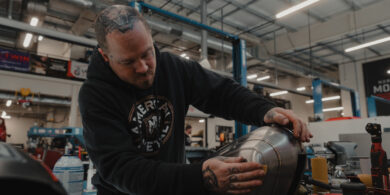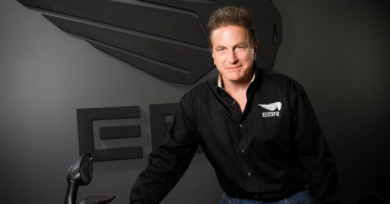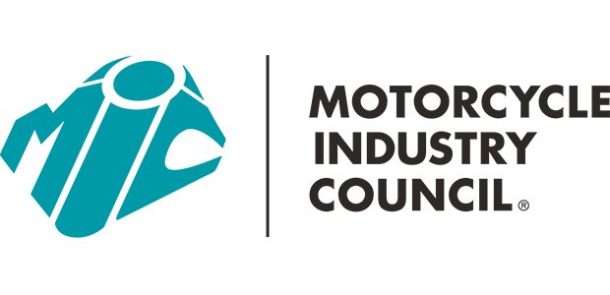Kasea continues to add offerings
Kasea Motorsports has matured significantly in the last six years, since the days of the “Mighty Mite” kids’ quad. Kasea now has a full lineup of youth models and has more recently branched out into the entry-level sport quad market. With factories in mainland China and Korea, Kasea also produces dirt bikes, scooters and three all-terrain karts to offer with its ATVs. Kasea hasn’t reached the status of its Japanese and American competitors, but it’s reached a level of acceptance and continues to grow.
Kasea is also expanding its ATV business to Europe, a market it entered two years ago. Kasea has been in the U.S. for 13 years and now will introduce both off-road versions and street-legal Skyhawk models in Europe where there is a large street-legal ATV following. However, Kasea had to meet strict EEC guidelines before it could import the Skyhawks to Europe. Street-legal changes include a horn, turn signals, updated plastic, fuel tank, and brakes. In 2004, the three Skyhawk models will join the three Adventure Buggies and the new Explorer.
Entry Level Models
The 2004 lineup consists of four ATVs and four karts. The Skyhawk 250 could be considered the flagship in Kasea’s line and fits in the same category as the Honda 250EX, though it lacks the polish of the Honda. Powered by a water-cooled, twin-cylinder four-stroke, the Skyhawk 250 received a few engine tweaks for 2004. This quad also gets a softer suspension, a re-adjusted carb, new plastic and graphics.
Dual Keihin carbs feed fuel to the quad’s twin cylinders. This setup results in a rev-happy quad with a stiff throttle. The clutch feel is spongy but simple to use.
The Kasea is easy to read and maneuver, even in challenging trail conditions. The 21-inch rear tires have a tendency to roll over in aggressive cornering and contribute to the quad pushing and two-wheeling in turns. These tires also force the suspension to work harder.
The 250 has preload-adjustable shocks, front and rear. The double A-arm front suspension supplies more than 7 inches of travel. The rear swingarm with single shock offers around 9 inches of travel.
The Skyhawk 250 is best suited for less-experienced riders who are less than 6 feet tall. For those seeking an entry-level, four-stroke sport model with a manual clutch, it’s either this quad or a more expensive model and brand. At $2,999 — $200 less than the Yamaha Blaster — this quad is reasonably priced and continues to improve.
The Skyhawk 170 is essentially the same as the 250, with a smaller, 169cc, single-cylinder, four-stroke engine. For roughly $500 less, the Skyhawk 170 might be a better fit for entry-level buyers. It’s 36 pounds lighter, dry, than its larger sibling. This improves the quad’s handling, suspension function and power. It has the same chassis and suspension configurations.
Youth Models
Kasea’s youth lineup consists of two Skyhawk sport models and two Outback utility models. The Skyhawk 90 and the Skyhawk 50 retail for $2,199 and $1,999, respectively. All four quads use a continuously variable automatic transmission and oil-injected two-stroke powerplants.
For 2004 Kasea softened the suspension setting on its youth quads and added a rear foot brake.
The Skyhawks share the same dimensions and safety features. The 83cc Skyhawk 90 weighs 233 pounds and has 4.33 inches of ground clearance, while the 49cc Skyhawk 50 is 22 pounds lighter, shorter and has a 4-inch ground clearance. Electric start, rear-mounted tether kill switch, wrist lanyard, and dual speed controls are standard on both. The quads have large rubber foot pegs that offer a stable stance for kids, but we’d prefer the foot pegs found on the larger Skyhawks.
Think of the Outback 50 ($2,009) and 90 ($2,299) units as Skyhawks with utility features and plastic.
The Mini 50 is one of Kasea’s best-selling ATVs. This little unit may look like a battery operated ATV, but it’s more than a toy. With a full working suspension, wrist tether, rear-mounted tether for parents, full floorboards and throttle controls, Kasea made this quad safe for the 6-year-old kids and first-time youth riders it’s targeting.
The Mini 50 doesn’t have a foot brake, but it does use a single brake lever, mounted on the left side of the handlebars, to control the rear drum brake. A front brake can be added as an option. Weighing a scant 128 pounds, dry, the Mini 50’s 49.3cc, single-cylinder, two-stroke motor should keep young riders entertained for hours. The 19.5-inch seat height is also accommodating to younger riders.
Four-Wheelers?
Kasea’s line of four-wheeled go-karts are fun to drive, but they’re not ATVs. Kasea calls them all-terrain karts, but even that’s a stretch. These buggies are more like miniature sand rails that can tackle fire roads, dunes and dirt trails.
The close-to-production, single-seat Explorer 250, manufactured in Korea, is Kasea’s version of the Honda Pilot.
The Explorer 250 is powered by a Kymco 249cc, water-cooled, four-stroke engine. It measures 86.4 inches long by 59.4 inches wide and has a 62.2-inch wheelbase. Dual A-arms are found in the front and rear and the Explorer has a 9.3-inch ground clearance. The machine rides on Kenda Bear Claw tires and weighs roughly 600 pounds dry.
Four-wheel disc brakes, four-point seat belt, twin headlights, automatic transmission and electric start are some of the other standard features. It will retail for $5,499.
Kasea has three Adventure Buggy models. The entry-level, single-seater AB125 has a redesigned frame and engine. This fun-kart is powered by a 125cc four-stroke engine.
The AB150R is larger than the AB125 and roughly 70 pounds heavier. This single-seater has a CV-type tranny, a four-stroke powerplant and a rear disc brake. It retails for $2,499.
The AB150R2 can accommodate two adults and costs $200 more than the AB150R. Both AB150Rs are powered by a air-cooled four-stroke engine.




